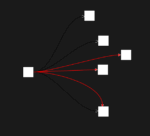Imagine sitting in a boardroom, faced with executives who eagerly suggest new software functionalities. Each request oozes ambition, innovation, and potential—yet sometimes, the right decision isn’t about embracing every new idea but knowing exactly when to say no.
As tech consultants specializing in data-driven analytics and innovation, we’ve found that knowing when to reject a feature request isn’t merely strategic; it’s essential. Declining certain feature requests—when done thoughtfully and transparently—can actively build and solidify trust across development teams, executive stakeholders, and end users. It’s a skill, an art, and a decision-making discipline that demands confidence and clarity.
Let’s dive into understanding exactly when it’s appropriate to say no, and how making these challenging yet clear-cut decisions significantly enhances credibility, optimizes available resources, and fosters meaningful innovation.
Why Saying No is as Critical as Saying Yes
When leading technology initiatives, it’s tempting to see “yes” as the pathway to success. After all, who doesn’t want more features, increased capability, and heightened competition in the marketplace? Yet, every new feature accumulates hidden costs: increased complexity, additional testing time, and often a larger architecture footprint that slows down development cycles. Decisively saying no demonstrates a deep awareness of opportunity costs. It prioritizes strategic value above the mere expansion of features.
Consider your IT and analytics teams—these experts have limited capacities, and channeling their attention to less impactful features means missing the opportunities with real, measurable impact. Instead, your teams should be laser-focused on delivering features that directly align with your core business objectives and data-driven metrics. Saying no demands a crystal-clear understanding of your software development strategy and intuition built on data analytics and industry insight.
When you consciously reject lower-value features, you free your organization’s resources, encouraging your employees to adopt a clearer focus on critical areas that drive innovation and efficiency. This can significantly streamline production planning processes, helping align manufacturing precisely with anticipated demand. For a deeper dive into honing this alignment, consider our insights on streamlining production planning.
Red Flags: How to Know When to Decline a Feature Request
No Clear Alignment With Strategic Objectives
Strategically aligned features are those that directly support stronger analytics, enhance data quality, or improve user experience. If a proposed feature does not align clearly with strategic objectives, it needs thorough reconsideration. Are we adding complexity without clear ROI? Are we losing agility for no significant strategic gain? Leverage your company’s analytics prowess to evaluate each feature request based upon metrics aligned explicitly with strategic outcomes. For more on strategic alignment, explore our guide to unleashing growth potential through data analytics.
Technical Debt Accumulation Risks
Accepting extraneous functionalities without caution inevitably increases technical debt, gradually slowing down future enhancements, adaptability, and effective maintenance. Before approving any new feature, question your development leads: ‘What are the long-term maintenance and integration impacts?’ If the answer uncovers escalating complexity, or if it imposes significant resource expenditures for limited returns, it’s crucial to politely but firmly reject the feature. Crafting simpler, smarter applications begins by intentionally avoiding piling up unnecessary technical layers.
User Experience Compromise
Additional unmutilated feature additions can unintentionally degrade user experience. More isn’t always more; often, simplicity and clarity bolster usability far more than feature-overload does. If a proposed feature disrupts a well-considered UX strategy or negatively impacts intuitive navigation, it’s another signal ‘no’ might be your best move. Instead, advocate to enhance existing user experiences and data visualization practices, utilizing tools such as constructing insightful charts readily available through our guide on creating sparkline charts in Tableau.
Enhancing Trust and Credibility Through Transparency
Declining a requested feature should never be arbitrary or without sufficient explanation. To nurture trust within stakeholder groups, transparency in your decisions is essential. Whenever you decline a software feature request, always clearly communicate your rationale: use insightful analytics, detailed metrics, and clear strategic alignment language. Your transparency underscores credible decision-making and affirms your judgment is data-backed and purpose-driven.
Consider the power of clearly communicated decisions supported by precise data warehousing protocols and analytics-driven methodologies. Executives gain higher confidence in your technical decision-making process, enabling stronger trust in recommendations and assessments. To strengthen your decision-making framework, check out actionable resources such as 20 tips executives need to understand about data warehousing. Transparency breeds lasting trust and cements your reputation as an informed, accountable, and data-centric technology strategist.
The Opportunity to Recommend a Better Alternative
Turning down a feature request should seldom be the end-point of your conversation. Professionally declining requests forms a vital opening for proposing improved alternatives. By tactfully translating the underlying requirement of the rejected feature you position yourself as proactive and solution-oriented. Consider integrating modernized techniques or leveraging emerging technology platforms to better address stakeholder pain points.
For instance, an original complicated request for over scaled data transformation could instead be replaced with modernized semantic layers delivering clarity and speed. Understanding how and when to utilize techniques such as semantic layers can dramatically simplify your data strategy. Explore our insights detailing exactly what a semantic layer is and why you should care.
Alternatively, transforming intricate traditional processes through AI tools could lead to vastly superior end results. Leverage our expertise through insights outlined in AI-powered tools that transform decision-making in 2025. Rather than ending the dialogue with a simple ‘no,’ you highlight strategic alternatives. Ultimately you will solidify credibility while empowering innovation opportunities.
The Long-Term Advantage of Strategic Feature Decisions
Prioritizing smart, strategic feature selection over haphazardly accommodating every request shapes healthier software architecture, boosts quality, and solidifies your company’s competitive edge. Sensibly and assertively saying no signifies insightful stewardship of resources and leverages your data-driven intelligence.
Ensuring your ETL (extract, transform, load) pipelines remain performant, agile, and robust often hinges on strategically rejecting features complicating these processes. For insights to optimize your ETL efficiency, consider expert-driven tips for improving the performance of your ETL processes.
Ultimately, learning to say no reinforces trust in your capability to strategically navigate technology innovation, demonstrating to stakeholders your ability to discern, implement, and unleash features that uniquely and directly enhance company advantage and reinforce sustainable competitive positioning.
Conclusion: Know When—and How—to Say No
Effectively declining certain software features isn’t a sign of weakness—it’s an essential part of prudent technology leadership. Transparent, logical communication regarding your decisions, backed by credible strategic and analytical reasoning, enhance trust throughout your organization. Whether you are an established professional or someone looking to break into the data industry, these skills remain invaluable.
Remember, a confident no today lays strategic foundations for sustainable innovation tomorrow. Say no judiciously, thoughtfully, and transparently—it’s the best yes you can offer your organization.

























